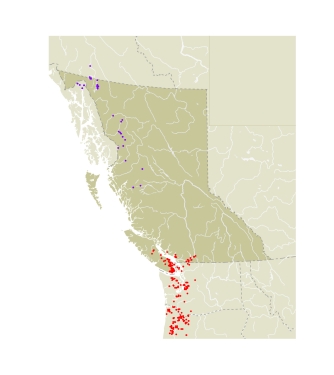Sara's Orangetips have one generation each year, and fly from March to May at low elevations in the south. In the north they fly in June, and in the mountains of Vancouver Island in July and August. Eggs are laid on the leaves, stems, and buds of Arabis in California (Shapiro 1981a, 1981b) and BC. Young larvae feed on leaves, but older larvae prefer flowers and fruits in both California and BC. Many pupae in some Californian populations diapause over two or more winters (Edwards 1887-97), apparently to provide insurance against population extinction caused by a single catastrophic drought season (Shapiro 1981b). Pupae from coastal BC seldom, if ever, diapause more than one winter (CSG),
possibly because the environment is more predictably moist than in California. In California the nominate subspecies has a partial second generation when there has been a wet spring (Evans 1975), but subspecies flora is always univoltine.
Larval foodplants include Arabis glabra in the area of Victoria, BC (Jones 1935; J.B. Tatum, pers. comm.; CSG; GAH) and Arabis drummondii at Silverhope Creek near Hope (ACJ). Various Brassicaceae are used elsewhere, including Arabis sparsiflora, Barbarea vulgaris, Brassica kaber, Descurainia, and Sisymbrium officinale (Opler 1967a) .
|
|
